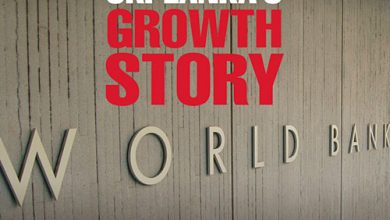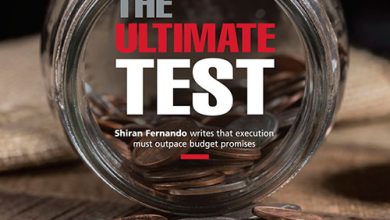ECONOMIC PREVIEW
V-SHAPED RECOVERY?
Shiran Fernando outlines the potential challenges facing the economy over the course of 2021

While the COVID-19 pandemic rattled the global economy in 2020, the success of vaccine trials offers hope that they could be rolled out in the first half of the new year, thereby bringing about a sense of normalcy with some forecasters labelling this a ‘V(accine)-shaped recovery.’
The news of progress in terms of vaccines is regarded as a positive for global demand prospects in the 12 months ahead. Moreover, the OECD expects global growth to reach pre-pandemic levels by the end of 2021.
So let us review some of the global and local economic expectations for the year ahead.
GLOBAL COOPERATION The incoming US administration under President-elect Joe Biden is set to take a more collaborative approach to global trade and COVID-19 relief efforts.
While the pressure on US-China trade is expected to continue, it could be less direct and disruptive to the trade system – and as such, ease tensions observed during the Trump administration.
This would be a welcome sign for the global economy as it navigates itself out of COVID-19 led economic woes with more predictability.
The main risk for the global economy is if there are any setbacks from the expected rollout of COVID-19 vaccines. These may emerge at the stage of production, distribution or acceptance by the public, and would dim the outlook immeasurably.
Another major risk highlighted by international forecasters refers to the battle over technology dominance persisting in 2021, leading to alliances of the West with China and its allies.

INTEREST RATES If lower global interest rates were to persist in 2021, it would be a positive for emerging markets such as Sri Lanka that rely on capital inflows. In November, foreign inflows to emerging market portfolios amounted to a record US$ 76.5 billion, according to the Institute of International Finance (IIF).
These inflows, which were the 10th highest as revealed by IIF records, were due to positive developments on the COVID-19 vaccine front and outcome of the US presidential election, which eased global geopolitical concerns.
Lower interest rates could also lead to investors seeking higher yield emerging market debt in 2021. This would also be a positive for new sovereign bond issues that countries such as Sri Lanka may have to issue during the year to refinance existing debt.
GROWTH DYNAMICS The domestic economy is delicately placed in terms of macro stability although it has weathered the COVID-19 shocks extremely well. Meanwhile, the focus of the government’s maiden budget for 2021 is to drive Sri Lanka’s economic growth back to five percent or more.
In addition, the budget was widely welcomed for providing tax policy continuity, and focussing on major areas such as exports, investment, SMEs and infrastructure.
These focal points of the economy will need to rebound if Sri Lanka is to bounce back stronger in the new year.
The budget did not completely douse the concerns of investors and global credit rating agencies over Sri Lanka’s debt refinancing capability in the medium term. Sri Lanka has an average of between four and 4.5 billion dollars in external debt maturing between 2021 and 2025.
Budget 2021 did not include any substantially new tax revenue raising proposals despite anticipating a 27 percent rise in income driven by policy consistency and improved tax administration.
The government expects a higher budget deficit of 8.8 percent of GDP in 2021 compared to 2020 (7.9%) but expects this to reach four percent by 2025.
Fitch Ratings downgraded Sri Lanka’s credit rating by one notch to ‘CCC’ in late November, stating that the budget lacked a credible fiscal consolidation strategy and provided limited details on the potential revenue impact of the measures announced, raising uncertainty over the future direction of government debt and the budget deficit.
FISCAL POLICY For its part, the government is confident that its policies will stimulate growth, which would enable the country to grow out of its fiscal and debt concerns. Its policy would be to borrow more locally (94% of the budget deficit in 2021 is to be financed locally) by taking advantage of the low interest rate regime.
The government expects to change the foreign debt to local debt mix from 49:51 to 40:60 by the end of 2021 through this strategy – i.e. by repaying maturing foreign debt this year and not pursuing foreign debt driven investments.
Other areas of the economy such as exports, foreign direct investment (FDI) and remittances will also need to perform favourably, to ensure that Sri Lanka’s reserves are strengthened and can manage debt repaying commitments.
Furthermore, tourism will have the potential to support the economy – particularly over the second half of the year – if efforts to roll out COVID-19 vaccines in key tourist markets are successful.
As such, the economy would need to manoeuvre itself carefully during the year, allay fears with regard to debt through strong communication and action, and maintain a foundation for higher growth beyond 2021.





